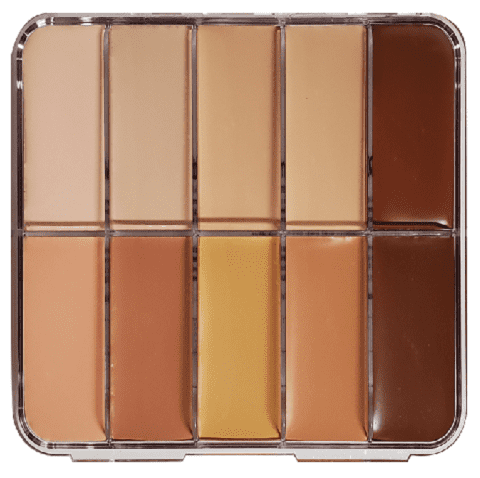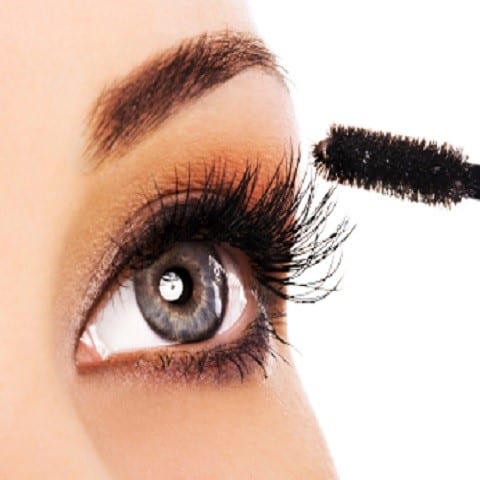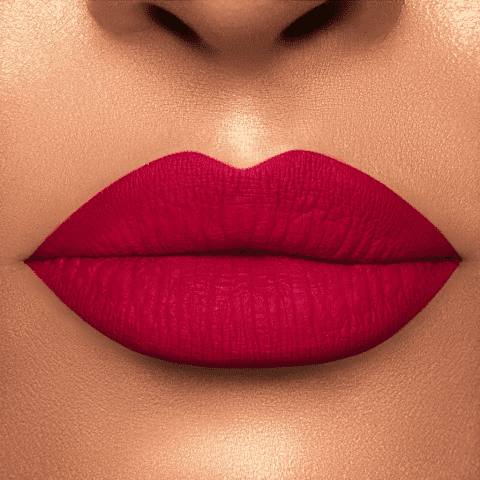Do you wear makeup? If so, you may be wondering about PFAS in makeup products you use.
PFAS are chemicals that have been linked to cancer, infertility, and other health problems. They’ve been found in many products, including makeup. But not all cosmetics contain them! We’re here to help you find out which ones do and how to avoid them.
PFAS compounds have been found in more than half of cosmetics tested. Makeup products that are known to contain PFAS include foundation, mascara, lipstick, and eye liners. Manufacturers are not required to disclose PFAS-containing ingredients, so it’s not easy to know whether your beauty products are contaminated or not.
In this article, we will discuss PFAS and their effects on the body, their presence in makeup, and what you can do to protect yourself. Keep reading to learn more!
Table of Contents
What is PFAS
Per- and poly-fluoroalkyl substances (PFAS) in everyday consumer products, including non-stick cookware and pizza boxes, are connected with severe health effects such as cancer, weakened immune systems, and low birth weights. They are a highly persistent and potentially toxic class of chemicals that are in the news more and more frequently.
Forever chemicals
The 4,000 different compounds in this group of chemicals have been around since the 1940s and have been used to produce everything from consumer products, food packaging, fire-fighting foams, and industrial materials. One of the reasons that PFAS compounds are so widely used is they are resistant to heat, water, and stains. This is why they are applied to carpets, fabrics, and clothing.
Unfortunately, PFAS compounds do not break down the way other chemicals do. They persist for long periods of time in the environment and our bodies – hence they’re called “forever chemicals.”
Health Effects of PFAS
The Centers for Disease Control and Prevention (CDC) has a long list of health concerns related to PFAS. They cite the following risks and harms caused by exposure to PFAS:
- liver damage
- thyroid disease
- decreased fertility
- high cholesterol
- obesity
- hormone suppression
- various types of cancer
PFAS chemicals have been linked to breast, kidney, liver, ovarian, prostate, and testicular cancers. They are suspected to cause non-Hodgkin’s lymphoma.
According to the CDC, there is evidence that PFAS affect antibody responses to vaccines such as Covid-19.
How Widespread is PFAS Usage in Cosmetic and Beauty Products
The use of PFAS in personal care products is widespread, as it can be found on the majority of ingredient labels. PFAS are harmful and unnecessary ingredients in makeup.
These compounds are added to make cosmetics and lotions more spreadable, water-resistant, and durable. Any time you see a product advertised as waterproof, sweatproof or long-wearing, it’s a safe bet that it contains one or more of a potentially toxic class of chemicals called PFAS.
Manufacturers add PFAS to cosmetics
The addition of PFAS in cosmetics has been on the rise. Cosmetic companies use these compounds to increase durability, consistency, and water resistance for products that are typically made with waxes or oils that break down quickly upon contact with skin moisture.
PFAS have largely replaced traditional materials like paraffin because they do not degrade under heat treatment conditions common during mass production processes – this means you get more wear time before your favorite lipstick needs replacing!
 | Foundation Foundation is a liquid or powder makeup applied to the face, which creates an even complexion and can change your natural skin tone. PFAS compounds are used to make these products easier to apply and resistant to moisture. |
 | Eyeproducts Cosmetic eye products are applied below the eyes to cover up dark circles or discoloration. Fluorinated compounds are added to make these products spread evenly and not streak. |
 | Mascara Mascara is a cosmetic commonly used to define eyelashes. It may darken, thicken and lengthen your lashes with various effects like volume or length. PFAS compounds prevent clumping and help these products go on more smoothly. |
 | Lip Products Lipstick is a cosmetic that applies color, texture, and protection to the lips. PFAS molecules make lipstick glide on smoothly, resist moisture, and maintain a glossy texture. |
Laboratory testing results
In a recent study by researchers from Notre Dame University, they reported high levels of fluorinated compounds in 52% of 231 cosmetic samples. The table below summarizes the results of their comprehensive testing.
Product Category or Sub-Category | Number of Products Tested | Percentage of Products with High Fluorine |
| All Lip Products (lipsticks, glosses, shadows, liners, shimmers, balms) | 60 | 55% |
| Liquid Lipstick | 42 | 62% |
| Foundations (liquids, creams) | 43 | 63% |
| Concealers | 11 | 36% |
| Other Face Products (powders, blush, bronzers, highlighters, primers, sprays) | 30 | 40% |
| All Mascara | 32 | 47% |
| Waterproof Mascara | 11 | 82% |
| Other Eye products (shadows, liners, creams, primers, pencils) | 43 | 58% |
| All cosmetics tested | 231 | 52% |
As you can see in the table above, total fluorine concentrations are high in many popular makeup products.
Our skin, lips, and eyes allow toxic chemicals to enter our bodies through the process of absorption. PFAS can be absorbed through thin-walled membranes near our mouth and tear ducts. Lipstick is problematic because it can be accidentally swallowed – over a lifetime of use you will likely consume several pounds.
PFAS are not only used in cosmetics; they may also be found in cookware, clothing, carpet, and fast-food packaging.
How Can You Protect Yourself
When you shop for personal care products, be sure to read labels thoroughly. Check for any words like ‘perfluoro’ or ‘ PTFE.’ If it contains either of these ingredients then throw it out immediately!
You should also be cautious of cosmetics that claim to have long-lasting, water-resistant, waterproof, or sweatproof formulations since they’re more likely to include PFAS.
Unfortunately not all companies adequately disclose what else is contained within their formulation. This makes selecting a safe option very difficult.
While this won’t allow you to avoid these ingredients entirely, it will reduce the levels of exposure that is currently happening.
Reducing exposure can help decrease some risks associated with daily use – though ultimately turning off the tap may be necessary here given how persistent many of these toxins are.
Can’t I just check the label
Fully 90% of the products tested had indicators for PFAS chemicals in them despite not having any on their ingredients list! This means there is a possibility consumers are exposed unknowingly through skin absorption or inhalation.
To avoid potential exposure – whether intentional or unintentional – it would help if people had reliable information when buying personal care products like shampoo and cosmetics.
That’s why we need government oversight, so that you can make informed decisions about what goes into your body.
Try these apps
It can be difficult to avoid potentially harmful chemicals when some products contain unlisted ingredients. Fortunately, there is an app and a few websites that scan makeup-ingredient lists for you, looking for toxic chemicals like PFAS.
There are a few apps available that can help decode ingredient lists. They also check to see if the maker has disclosed any unsafe additives in their product.
Clearya is a free mobile app and browser plug-in that automatically scans the ingredients of your favorite cosmetics as you shop online. At checkout, users are notified if there’s anything unsafe in their cart–such as PFAS!
The Environmental Working Group also has an online Skin Deep Guide that helps consumers find out what chemicals are in makeup. It has thousands of makeup products that can be searched to see what’s in their favorite cosmetics.
What if your product contains hazardous chemicals? These apps can help you find similar products that are made from non-toxic ingredients.
PFAS-Free Makeup Brands
The results of the study revealed that about half of the products contain PFAS in some form. The findings also showed that almost 50% of beauty products do not include PFAS. That is good news for health conscious makeup wearers.
The brands listed in the following table do not contain PFAS.
| Retailers | Products |
| H&M | All store brands |
| Sephora | Clean category products |
| Credo | All products |
| Whole Foods Market | All products |
| Manufacturers | Products |
| L’Oréal | All products |
| type: A Deodorant | All products |
| California Baby | All products |
| Otter Wax | All body and skincare products |
| Annmarie Skin Care | All products |
It’s hard to know where to find safe and PFAS-free cosmetics and personal care products. We’ve prepared a list of beauty products that do not contain PFAS.
type: A Deodorant
type: A Deodorant is made of all-natural ingredients and does not contain any PFAS chemicals. They are a well-known and trusted brand.

Check on Amazon
California Baby cosmetics
California Baby makes a line of cosmetics, shampoos, creams, and other body care products that are made from plant-based ingredients. All of their products are PFAS-free. While they are made for infants, adults can use them, too.

Check on Amazon
Annmarie Skin Care products
Annmarie Skin Care products are another line of all-natural makeup and skin-care products. They do not contain PFAS and are sold in many natural and holistic personal care stores. I use their moisturizer because it has no measurable PFAS.

Check on Amazon
Final Take
PFAS has been identified in nearly half of the cosmetics that have been tested. These chemicals are linked to cancer, infertility, and other health problems so it’s understandable why people would want to avoid them. Thankfully there are apps like Clearya that can help you identify if your makeup contains these harmful substances so you know what products to avoid.

